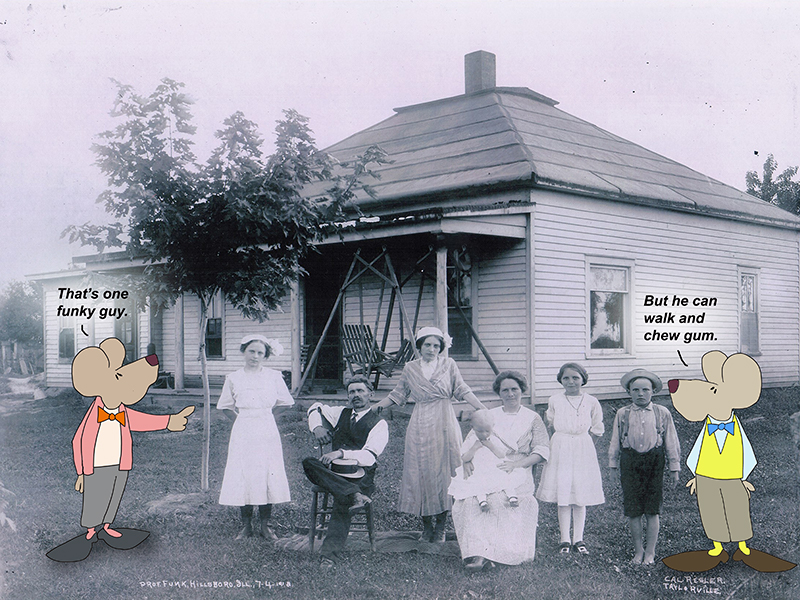It is said, sometimes, that truth is stranger than fiction. In many cases, this is the truth.
Let’s start with the man’s name. Otto E. Funk. First, I love a word that is the same going forward as it is heading in the other direction, like Otto. Those palindromes. Civic. Or rotator. Wow.
Back to Otto Funk. He was a German-American born on October 6, 1868.
His parents had migrated to America from West Prussia in the mid-1800s. They were married here in a little place called Pilot Knob, Missouri, in 1859.
I found it curious that a place would be named “Pilot Knob” way back in 1859 when we didn’t have pilots back then. As it turns out, Pilot Knob was named after the Pilot Knob mountain nearby. That mountain was used as a navigational landmark or “pilot” to hunters and travelers. Pilot. To guide or steer.
Dang it. Back to Otto. His family had a rough go of things to start out. First of all, their 80-acre farm was destroyed by Confederate soldiers. To smithereens. So, they picked up and moved to St. Louis, Missouri, where Otto was born in 1868. He was one of seven kids. I like families with seven kids. Back to the Funks. In 1881, the family bought a 360-acre farm in Montgomery County, Illinois, and relocated there.
His parents must have thought that the children should learn to play music. So Otto Funk had early musical training in piano and violin and must have excelled. During his teen years, he was sent overseas to study with some of Germany’s finest music teachers.
So, having learned a tune or two, Otto Funk returned to the St. Louis area after his studies in Königsberg. He started performing as a concert violinist. His wife was a well-known pianist named Della Edwards, by the way. I bet they made music together.
Late in his life, he got a big idea. He decided to take a walk while playing his violin. This little adventure gained Ottos his fame as “the Walking Fiddler” in the Guinness Book of World Records. The plan was for Otto to play his Hopf violin every step of the way as he walked from New York to San Francisco in 1929. The trip would be 4,165 miles. He was 61 years old at the time. And he was not a big man, by any means. He stood five feet two inches tall and weighed approximately 100 pounds.
The year-long trek involved playing 142 theatre performances, hundreds of street concerts, and 18 live radio concerts. Little man Otto wore out several dozen bows and twenty pairs of shoes. He had sponsors, and one was the Brown Shoe Company, who provided his kicks. He was accompanied on his trip by his son-in-law, Lester Grundy. Lester drove behind in a Ford motor car that served as a dressing room, storage facility, and sleeping quarters.
The 1920s were a time of free-thinking and gayety, an era filled with roller derbies, 30-day dance contests, and walkathons. Otto Funk’s journey was his own attempt to draw attention to his abilities as an old-time fiddler and durable walker. He was featured on magazine covers and in newspapers. All this publicity fueled his interest in making a national name for himself. His hope was that his fame might exceed that of his musical rival, the Austrian-American violinist Fritz Kreisler.
I’m not sure if the deal made him more famous than Fritz. But four years later, when he died in Hillsboro, Illinois, he was given the biggest funeral in the history of Montgomery County.
His walk was no more, but the band played on. You see.
The band played on.
==========
“The greatest thing in this world is not so much where we stand as in what direction we are moving.”
― Johann wolfgang von Goethe
==========
“Do you not know that a man is not dead while his name is still spoken?”
― Terry Pratchett
===========
“We all shine on…like the moon and the stars and the sun…we all shine on…come on and on and on…”
― John Lennon
===========
Walking. Playing. With shoes and bows.
